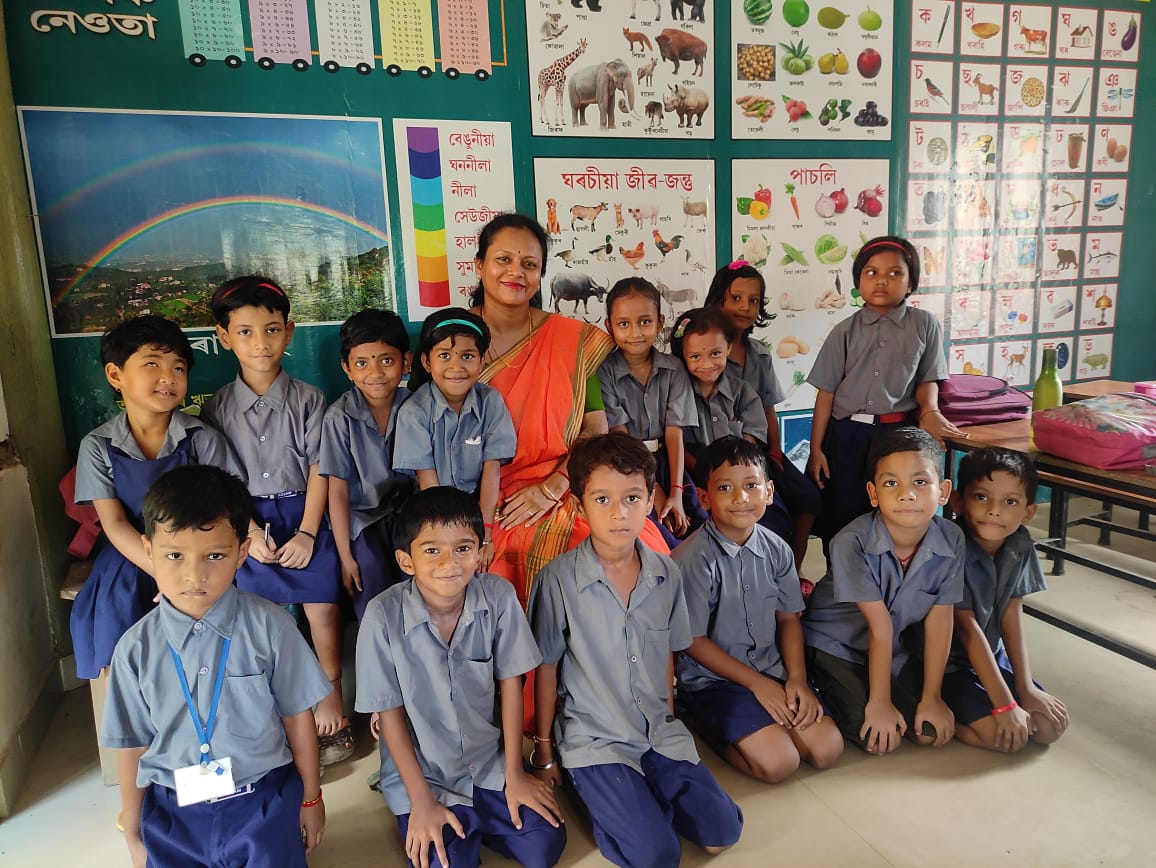Tanu Ram Sishu Vidyalay Primary School (TRSVPS) is located in the Rampur block of Kamrup Rural district in Assam. In this interview, we hear from Puja Chetri (Head Teacher – TRSVPS) who shares interesting insights from her 12-year long teaching journey. She joined the teaching service in 2012 and has been teaching at TRSVPS since January 2016. She currently teaches Assamese for Grades 1 to 5.
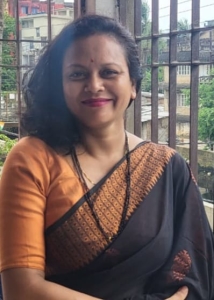
(Head Teacher – Tanu Ram Sishu Vidyalay Primary School, Assam)
Q1. You have been a teacher for more than a decade. Can you reflect on the importance of foundational literacy and numeracy (FLN) in a child’s educational journey?
It is essential that our students learn to read with comprehension and develop basic numeracy skills, so that they can better understand and enjoy their learning as they progress to higher grades. In fact, studies have shown that over 85% of a child’s cumulative brain development occurs before the age of six, highlighting the critical importance of proper care and brain stimulation during the early years to ensure healthy development and growth. This makes the foundational stage the most important phase of a child’s life and we must be mindful of how we shape their learning journey during this period.
Q2. What have been some of the key measures that your school has adopted to enhance FLN skills among students?
In Assam, we received training on using structured pedagogy in a comprehensive way to ensure that our students learn more effectively. One of the key methods we use is the 4+1+1 instructional model, which translates to four days of teaching, one day dedicated to assessments and one day for remediation. This approach helps us closely monitor student progress and address learning gaps.
This year, the State Council of Educational Research and Training (SCERT) Assam introduced new textbooks that serve as both textbooks and workbooks for students, providing an integrated learning experience for them. Additionally, we utilise a variety of teaching-learning materials (TLMs), such as Karjyapatra (worksheets), conversation charts, Benjanbarna charts (consonants chart), grids (with and without vowel symbols), letter cards, Barnawali charts (Alphabet chart) and cards, sentence cards, word cards, big books, picture stories, poem pictures, reading books, work cards (for numeracy) and numeracy posters.
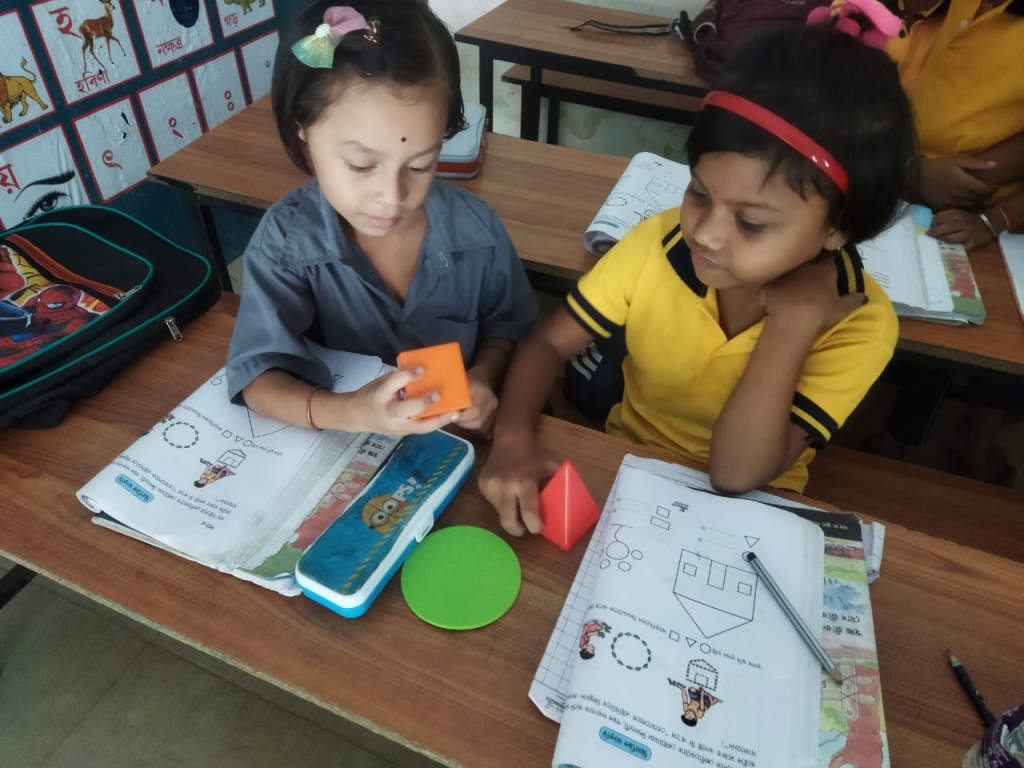
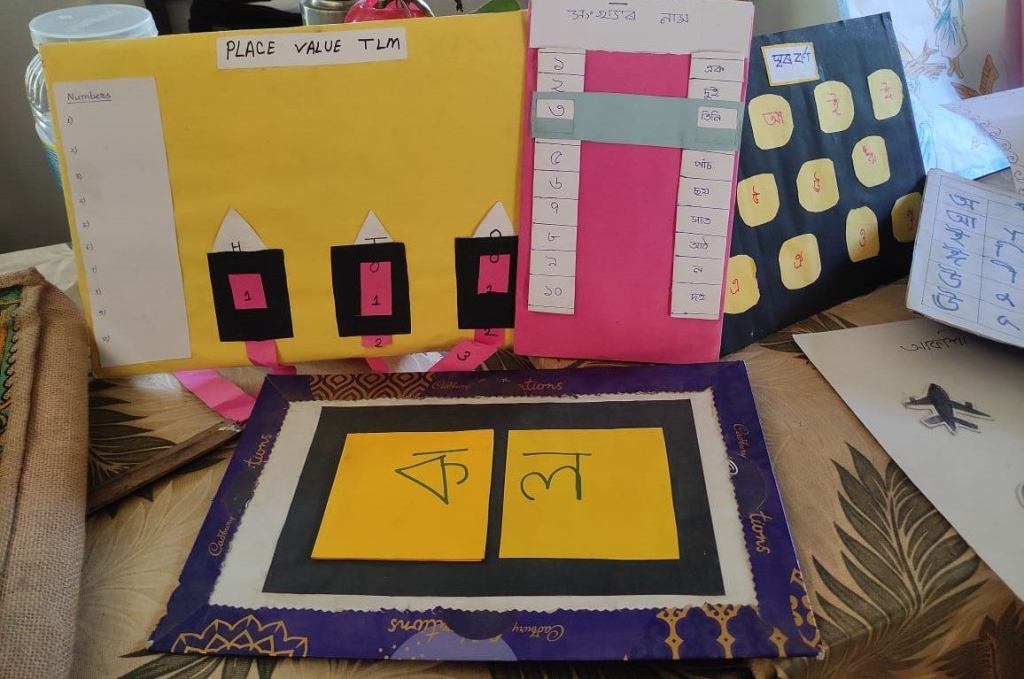
R: TLMs developed for supporting teaching-learning for foundational grades
Moreover, the state provides numeracy kits for students in Grades 1 to 3, which have been a great resource in enhancing numeracy skills among our young learners.
Q3. How can teachers facilitate better student learning outcomes, especially in the context of foundational literacy and numeracy? How do you see yourself gearing up for that responsibility?
Teachers play a crucial role in shaping the future of children and in turn, the future of our nation. We have received comprehensive training on FLN content, pedagogy and the use of teaching-learning materials. However, it is important for us to understand that this is a gradual process of change and will take time to show impact.
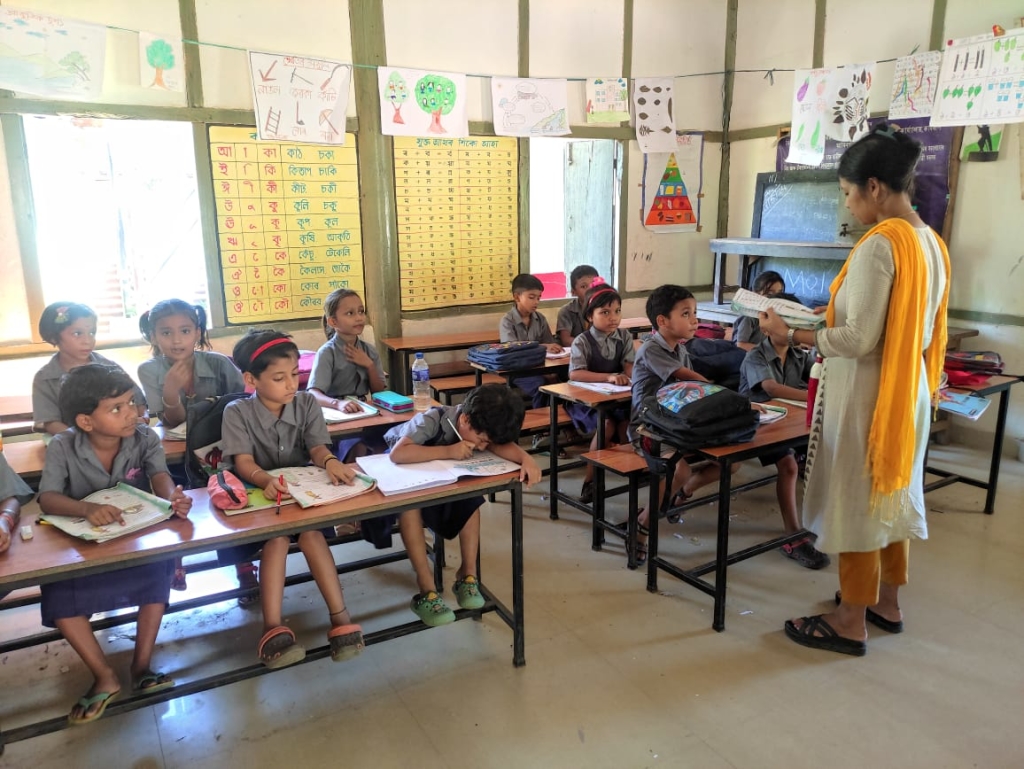
In our school, we have discussions every Saturday to reflect on how we can improve our classroom interactions and culture. I provide feedback to the teachers and we all exchange our thoughts on the matter. Additionally, we talk about the need to continually adapt and update ourselves to keep us up to date with teaching trends.
Since our school is in an FLN block (Rampur), we regularly receive visits from Cluster Resource Centre Coordinators (CRCCs), who use a classroom observation tool to assess our teaching practices. This is quite interesting because for the first time, we are closely observing classroom dynamics and receiving constructive feedback. Based on the CRCCs’ observations, Block Resource Persons (BRPs) also discuss areas for improvement with us and we work together to incorporate it in our teaching-learning processes in the classroom.
What I appreciate most about this classroom observation process is that it is not about monitoring or scrutinising us and rather supporting us to improve as educators.
Q4. How do you see technology playing a role in strengthening teaching and learning processes, both in the classroom and at home?
Today, we live in a world where technology connects us more than ever before. It has the potential to deliver unprecedented results in education, school administration and parental engagement. For example, most of the parents in my school are connected through a WhatsApp group, where we share important updates as well as activities that the parents can do at home with their children.
Additionally, we use tablets provided to our school to explore innovative teaching and learning methods. We also rely on the Shiksha Setu Axom application (Shiksha Setu Axom is Assam’s e-governance initiative enhancing school education via real-time data monitoring, AI-driven attendance, and policymaking efficiency) to register teachers’, staff and students’ attendance regularly. This helps us easily track student attendance and take necessary steps if a child is absent for an extended period. Teachers’ attendance is also recorded on the application, helping us identify gaps and areas of improvement for our educators.
Interestingly, one of the parents who works in a factory shared with me that he feels very happy knowing that his child’s attendance is being tracked. He feels that the government’s focus on monitoring attendance shows a real commitment to his child’s education. It also made him feel more responsible for ensuring that his child goes to school every day.
In fact, the Shiksha Setu Axom application has recently been recognised in the gold category for excellence in e-governance in India, which is a proud moment for us as users.
Technology is helping us improve in multiple ways and we are excited about the possibilities it offers for education.
Q5. What is your inspiration to get up each morning and come to school?
The most inspiring part of my job is my students and their curiosity to learn and explore. I truly love my students. Their innocence instils in me a deep sense of responsibility to nurture them holistically.
I look forward to ensuring that every child in my school experiences the best possible classroom environment, fostering their learning and growth. With initiatives like NIPUN Axom, which aims for the holistic development of children in the foundational stage, our teachers adopt a child-centric approach to education. A critical part of my job also involves supporting our teachers and ensuring that the school runs smoothly through active community participation, particularly by engaging parents in the educational process.
We are responsible for shaping the future citizens of our country and that is both exciting and rewarding. Every day, I feel both excited and responsible for the role I play in their development.
